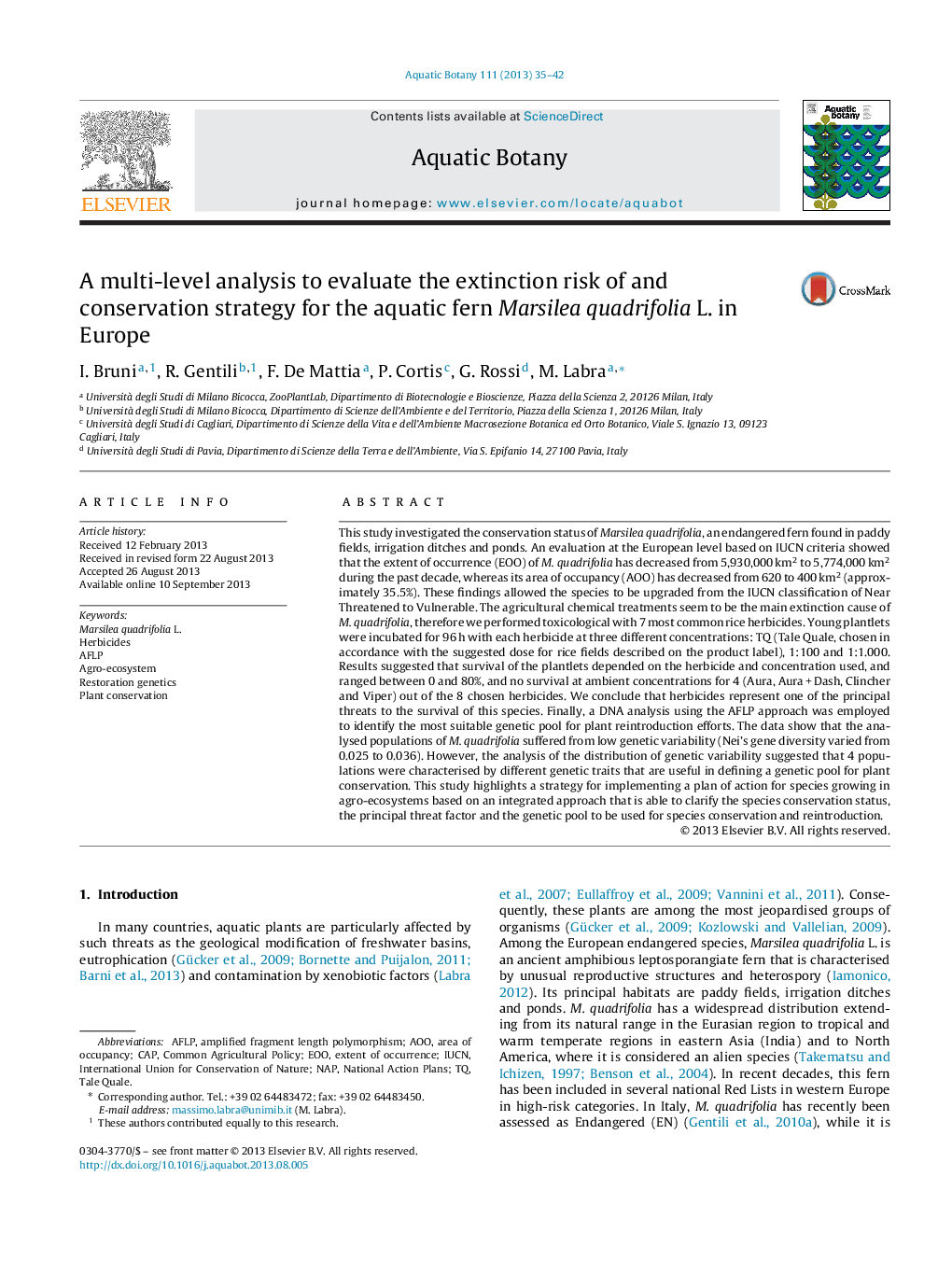| کد مقاله | کد نشریه | سال انتشار | مقاله انگلیسی | نسخه تمام متن |
|---|---|---|---|---|
| 4527843 | 1625831 | 2013 | 8 صفحه PDF | دانلود رایگان |

• Marsilea quadrifolia is a vulnerable species in W Europe based on IUCN categories.
• AFLP analyses show low genetic variability among and within M. quadrifolia populations.
• M. quadrifolia is sensitive to herbicides with different mechanisms of action.
• The implementation of an action plan for species in agro-ecosystems is outlined.
This study investigated the conservation status of Marsilea quadrifolia, an endangered fern found in paddy fields, irrigation ditches and ponds. An evaluation at the European level based on IUCN criteria showed that the extent of occurrence (EOO) of M. quadrifolia has decreased from 5,930,000 km2 to 5,774,000 km2 during the past decade, whereas its area of occupancy (AOO) has decreased from 620 to 400 km2 (approximately 35.5%). These findings allowed the species to be upgraded from the IUCN classification of Near Threatened to Vulnerable. The agricultural chemical treatments seem to be the main extinction cause of M. quadrifolia, therefore we performed toxicological with 7 most common rice herbicides. Young plantlets were incubated for 96 h with each herbicide at three different concentrations: TQ (Tale Quale, chosen in accordance with the suggested dose for rice fields described on the product label), 1:100 and 1:1.000. Results suggested that survival of the plantlets depended on the herbicide and concentration used, and ranged between 0 and 80%, and no survival at ambient concentrations for 4 (Aura, Aura + Dash, Clincher and Viper) out of the 8 chosen herbicides. We conclude that herbicides represent one of the principal threats to the survival of this species. Finally, a DNA analysis using the AFLP approach was employed to identify the most suitable genetic pool for plant reintroduction efforts. The data show that the analysed populations of M. quadrifolia suffered from low genetic variability (Nei's gene diversity varied from 0.025 to 0.036). However, the analysis of the distribution of genetic variability suggested that 4 populations were characterised by different genetic traits that are useful in defining a genetic pool for plant conservation. This study highlights a strategy for implementing a plan of action for species growing in agro-ecosystems based on an integrated approach that is able to clarify the species conservation status, the principal threat factor and the genetic pool to be used for species conservation and reintroduction.
Journal: Aquatic Botany - Volume 111, November 2013, Pages 35–42